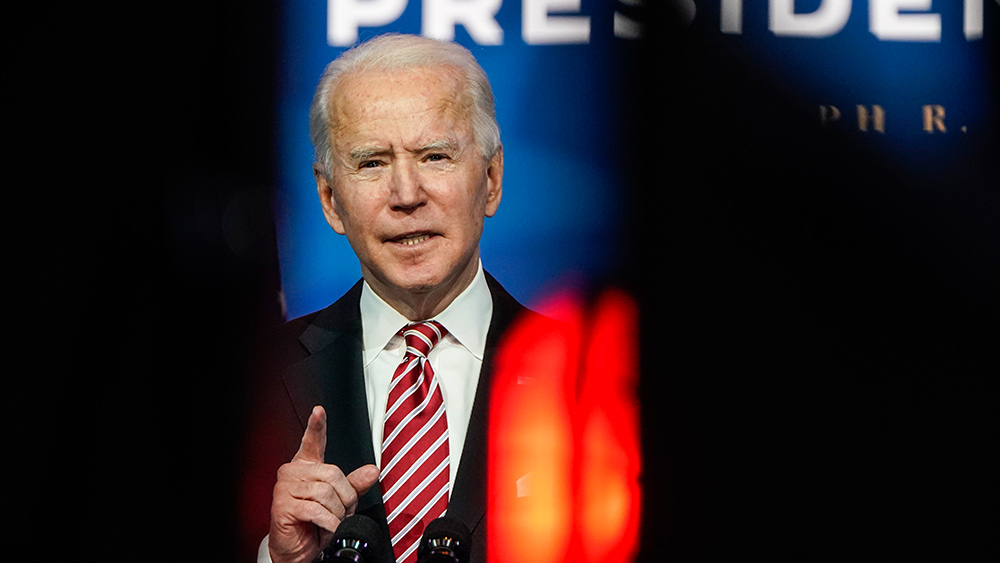Signs of a bubble: Cryptocurrencies now worth more than all US dollars in circulation
05/20/2021 / By Franz Walker

Cryptocurrencies hit a significant milestone last month, reaching a valuation of $2 trillion on April 29 – the same valuation as all U.S. dollars in circulation. While the statistic is seen as a solid indicator of crypto’s growing popularity, some warn that it’s a sign that crypto is in a bubble that may soon burst.
While the value of all cryptocurrencies matching and even surpassing all U.S. dollars in circulation is a significant milestone event, it can also be a bit misleading. All “U.S. dollars in circulation” does not account for all U.S. “Circulation” refers to physical cash and coins – liquid currency.
As explained by a Futurism report, in the same manner, the money in people’s pockets doesn’t usually represent all the money they have: A significant amount of U.S. dollars are tied up in banks, investments and other intangible assets.
Questions of a bubble
The massive skyrocketing of cryptocurrencies’ combined value – going from less than $500 million at the start of 2020 to over $2.25 billion this year – comes as stocks have also rallied, reaching values not seen since 2000. But the rate at which the market is growing is raising fears of a bubble.
According to a Wall Street Journal report, veterans of previous financial bubbles may find familiarities with the present. As mentioned, stock valuations are at their richest since the dot-com bubble of 2000. Meanwhile, home prices have gone back to their pre-financial crisis peak and interest rates are some of the lowest on record. At the same time, individual investors are pouring money into green energy and cryptocurrency.
The main driver of all this growth has been the Federal Reserve. Easy monetary policy tends to fuel financial booms, and it is exceptionally easy now. The Fed has kept interest rates at near-zero for the past year. In addition, it has signaled that these rates won’t change for at least two more years. At the same time, it has also been buying hundreds of billions of dollars of bonds. As such, the 10-year Treasury bond yield is well below inflation – meaning real yields are deeply negative – for only the second time in 40 years. (Related: Is this the biggest financial bubble ever? Hell yes it is.)
Taps remain open even as economy recovers
The low rates were in response to the ongoing pandemic. At times, the latter threatened even more economic damage than the 2007 financial crisis. But at the same time, moves by both the Fed and Congress, which has passed $5 million in fiscal stimulus, have made recovery much healthier than in the past. This could undermine the reasoning for such low rates and threaten the underpinnings of market valuations.
“Equity markets at a minimum are priced to perfection on the assumption rates will be low for a long time,” stated Harvard University economist Jeremy Stein, who served as a Fed governor alongside current chairman Jerome Powell. “And certainly you get the sense the Fed is trying really hard to say, ‘Everything is fine, we’re in no rush to raise rates.’ But while I don’t think we’re headed for sustained high inflation it’s completely possible we’ll have several quarters of hot readings on inflation.”
The Fed has been in this position before. During the late 1990s, its willingness to cut rates in response to the Asian financial crisis was seen by some as an implicit market backstop, which inflated the ensuing dot-com bubble. Then, its continued low-rate policy following the burst of that bubble was blamed for driving up housing prices.
A recent stability report from the Fed admits that the market is in bubble territory. In the report, it stated that valuations are generally high” and are “vulnerable to significant declines should investor risk appetite fall, progress on containing the virus disappoint, or the recovery stall.”
But despite this, fiscal and monetary taps remain wide open. Last year, Democrats first proposed an additional $3 trillion in stimulus last May when output was expected to fall 6 percent. Even though output only fell by less than half of that, Democrats are once again pressing ahead with the same size stimulus.
With this, perhaps the question isn’t if there’s a bubble that’s going to burst, but when this bubble that the market is already in will burst.
Follow MarketCrash.news for more on the impending bubble burst.
Sources include:
FederalReserve.gov[PDF]
Tagged Under: Bubble, crash, cryptocurrency, economic bubble, Federal Reserve, investment, market bubble, risk, stock market, stocks
RECENT NEWS & ARTICLES
COPYRIGHT © 2018 MONEYSUPPLY.NEWS
All content posted on this site is protected under Free Speech. MoneySupply.news is not responsible for content written by contributing authors. The information on this site is provided for educational and entertainment purposes only. It is not intended as a substitute for professional advice of any kind. MoneySupply.news assumes no responsibility for the use or misuse of this material. All trademarks, registered trademarks and service marks mentioned on this site are the property of their respective owners.


















